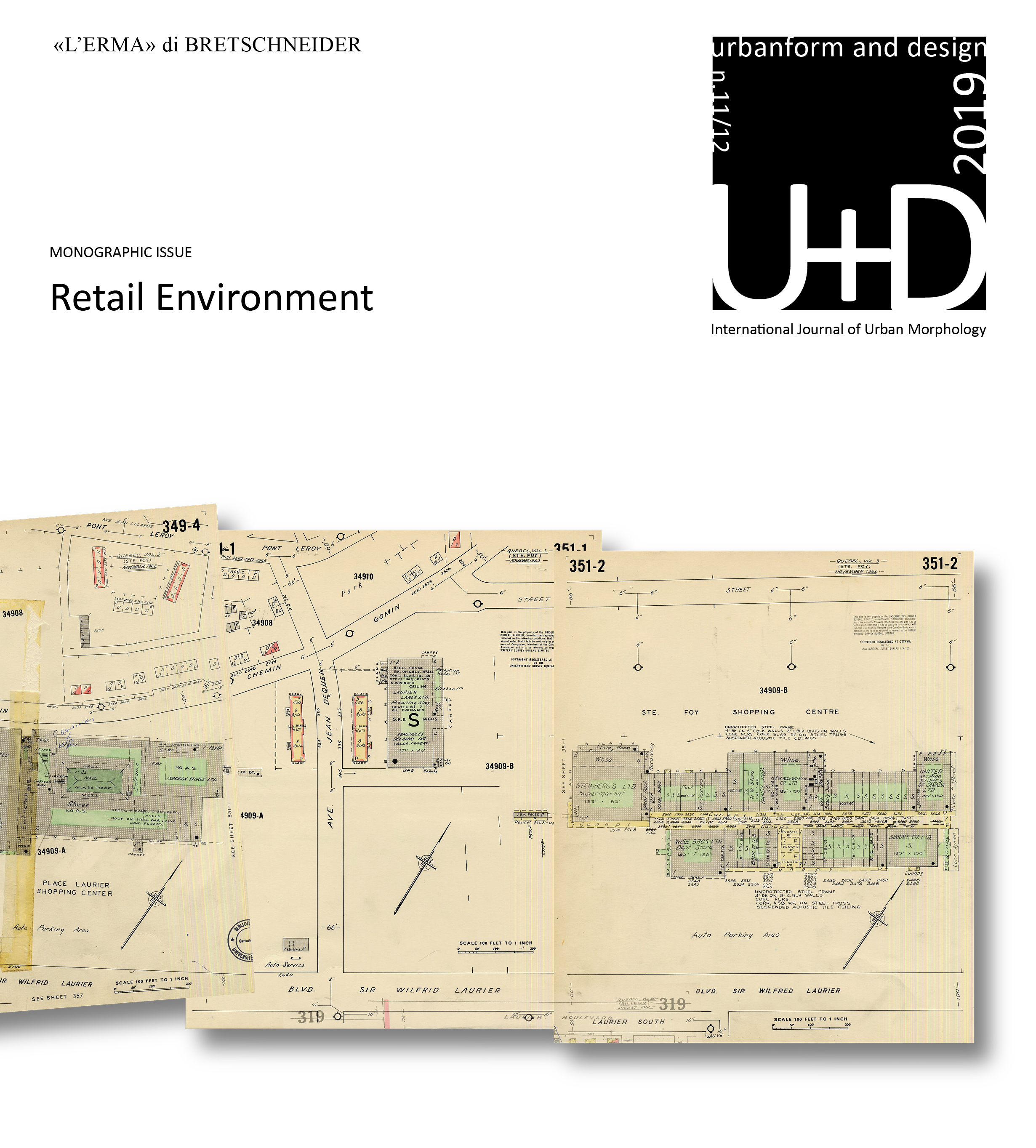 RETAIL SPACE AND FORM OF THE CITIES
RETAIL SPACE AND FORM OF THE CITIES
(U+D 11/12 EDITORIAL) https://www.urbanform.it/
Giuseppe Strappa
This issue of U + D marks a transformation in the life of our journal which, in some issues, will be organized around a single theme. Publishing monographic numbers is a problem that has been discussed for some time by the editorial board, not hiding the difficulties of the operation, but also considering that, as in any organic structure, even an “editorial body” must be continuously transformed, adapting to new conditions.
Taking into account the cultural context in which the editorial work takes place, which is that of a permanent condition of crisis, a monographic issue cannot simply be the assembly of a set of related subjects. In our opinion, it must be an “organic” aggregation, in fact, of collaborating and complementary texts, accepting contradictions and discontinuities, of course, but also establishing a clear interpretative line with respect to which the editor and editorial board indicate some basic choices and over which they have the responsibility.
This issue therefore deals with a single theme, and not an insignificant one, if it is true that the “retail environment” is one of the physical and ideal centers around which the transformation of the contemporary metropolis revolves. A theme, however, on which the architects have practiced sufficiently in terms of contemporary aesthetics but which, strangely, remains little investigated in its structural terms
We chose this theme because it brings us down to earth.
In the metropolis of the confusion of languages which, in every continent, expands and explodes into fragments, the immaterial seems to take over from reality and the virtual from the materiality of urban landscapes.
The very notion of the city as space inhabited (from the Latin habitare – habere, to possess) where the citizen, in the etymological sense of the term, “owns” the places and shares them in civil life, seems now lost. Network landscapes seem to detach themselves from real forms, from physical places: the mental image of a commercial distribution chain, of the links that bind the places of sale, now appears to be a conventional representation like icons on a computer screen.
The prophecy of Bill Gates seems to have come true. He who had promised the advent of a new man, free from all affiliation, telematic, who can be “here and there and in every possible place”.
For this reason, the study of the retail space has, today, a founding value: the concreteness (economic, physical, symbolic) of the space for the exchange, distribution, sale, shopping, commerce, with its multiplicity and, together, with its non-eliminable link with the life of men, it shows us how globalization is something very different from the dispersion of things in their representation. Living in an apartment building in Shanghai or in an attic in London is not yet, all things considered, the same thing. Especially because the streets and the spaces around them, the places where the exchange is concentrated, offer concretely different forms and conditions.
Certainly, one should not give in to the consolidated rhetoric of the identity of places: the problems of interpreting, as architects, this theme presents entirely new characters linked to the global circulation of products, to the internationalization of distribution networks, to the domination of the financial aspect, even in the trading problems, on the industrial one.
To realise this, just think of how, only half a century ago, the architects tried to tame the new theme of large retailers by linking it to the consolidated character of the cities. But also to how the theme of the retail space, with its application to pragmatism, had, even then, constituted a signal of reference to reality.
The Rinascente example in Piazza Fiume applies to everyone. Although fully involved in the critical atmosphere of the international modernism of those years, the Roman building was able to avoid, however, the literary suggestions that had led the Gardella of the house in the Zattere quarter to disguise a simple apartment house in a Venetian palace and the BBPR studio to evoke medieval shapes in the Torre Velasca skyscraper. Propitiated by the reality of the theme, the solution adopted by the Milanese Albini and Helg, using steel and prefabrication, seems, on the contrary, to realistically decline the plasticity of Roman construction in the internationalist tradition of transparent and light structures.
Light years seem to have passed since then. The large-scale retail trade now occupies the interstitial spaces of the metropolitan fringe belts, where the hypermarkets road networks, located by the laws of the market, end up between wrecks of farmland. With some specialized knots too, such as fashion outlets, captivating consumer villages exhibiting apparently cordial frontages towards the interior space.
These structures, which offer the architect the undoubted charm of instability, have contributed to the flourishing of a real literary genre crowded with confused neologisms (hybridizations, transhumances, mestizos). Also creating a form of legitimacy to the social and political contradictions that the laceration of the territory entails. Just think of the infinite small structures forced to close by the new forms of distribution, the emptying of the relationship between base and special fabric, the spread of online sales which, in turn, are rapidly making obsolete the new commercial centers too.
As you can see, the theme is highly articulated, multifaceted, and does not allow rapid synthesis. It is clear that this journal issue, which proposes some urgent problems for discussion, does not offer answers (nor could it) to the questions that the topic raises. But I believe it provides an idea of the current complexity and size of the problem, together with the proposal not to take for granted, organizing an aesthetic consensus around them, the contradictory conditions of the environment in which the exchange activities take place today.